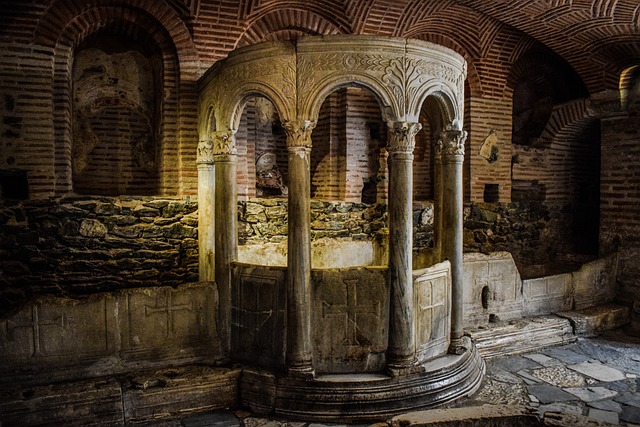[ez-toc]
The Parisian Catacombs: A Silent History of Death and Disease
Beneath the vibrant streets of Paris, a chilling reality lurks in the depths of the Parisian Catacombs. This subterranean labyrinth, a network of tunnels spanning 300 kilometers, holds the skeletal remains of an estimated 5 to 6 million individuals. These silent witnesses bear the marks of lives long gone, whispering stories of disease, death, and the evolution of ailments over a millennium. This is a place where history and science intertwine, offering a unique opportunity to unravel the secrets of a bygone era.
Researchers are venturing into the catacombs, not just to explore the macabre, but to delve into the past with scientific rigor. An international team of archeologists, anthropologists, biologists, and doctors have embarked on the first comprehensive scientific study of this vast ossuary. Their objective is to understand the lives and deaths of those who lived and died in Paris, tracing the evolution of diseases and the medical practices of centuries past.
We also Published
- Probability for Beginners (Lecture Class Notes Nov 2023) %%sep%% %%sitename%%
Probability for Beginners: Nov 2023 Lecture. Grasp the fundamentals of probability. Ideal for learners starting their probability journey. - Ol Doinyo Lengai Volcano: Unprecedented Uplift and Its Implications
Discover the enigmatic Ol Doinyo Lengai volcano in Tanzania, experiencing rapid uplift, raising concerns about potential eruptions. Explore the unique carbonatite lava flows and the vital role of satellite monitoring in understanding its dynamics. - FDA Approves Over-the-Counter Hearing Aid Software for Apple AirPods Pro
The FDA has authorized the first over-the-counter hearing aid software for Apple AirPods Pro, making hearing care more accessible and affordable.
The Unraveling of a Silent History
The catacombs’ origins are steeped in a time when Paris struggled with the grim realities of overcrowding and disease. Overwhelmed cemeteries and the fear of miasma – a toxic air believed to spread illness – prompted authorities to exhume the dead. The solution? Millions of bodies were unceremoniously dumped into abandoned quarry shafts, creating a morbid monument to the city’s past.
The transformation of the catacombs into a macabre tourist attraction was a stroke of serendipity. In the early 19th century, Louis-Étienne Héricard de Thury, the inspector general of quarries, sought to impart some semblance of order and respect to the haphazardly piled remains. Skulls and long bones were meticulously arranged into decorative walls, known as hagues, adding a touch of morbid artistry to the depths.
The Skeletons Speak: Uncovering the Secrets of Disease
This macabre tableau offers a unique opportunity for scientific investigation. The team, led by Philippe Charlier, is studying the bones for evidence of injuries, surgery, and disease. Paleopathology, the study of ancient diseases, allows researchers to identify ailments such as rickets, syphilis, and leprosy. But the exploration goes deeper. DNA analysis of teeth yields insights into infectious agents like the plague, which leave minimal skeletal traces.
The catacombs become a living laboratory for the study of disease evolution. Researchers are comparing the syphilis of centuries past to its modern counterpart, seeking evidence of micro-evolution within the infectious agent. The catacombs provide a glimpse into the history of medical practices, revealing the techniques used for amputation, trepanation (drilling holes in the skull), autopsy, and embalming.
The Legacy of the Dead
This ongoing research promises to unveil a wealth of information about the history of public health in Paris. Radiocarbon dating will help determine the precise age of the remains, and a more accurate count of the bodies buried within the catacombs is anticipated. This project, a testament to the enduring mysteries of the past, represents a unique endeavor to understand the lives and deaths of those who came before us.
The catacombs stand as a poignant reminder of our own mortality, a stark contrast to the vibrant life that pulses above. As the Count de Thury aptly inscribed, “Think in the morning that you may not make it to the evening and in the evening that you may not make it to the morning.” This message echoes through the depths of the catacombs, a stark reminder of the fragility of life and the enduring legacy of the dead.
The Parisian catacombs, once a place of discarded remains, have become a testament to the enduring mysteries of the past. They offer a glimpse into the history of death and disease, a chilling reminder of our mortality, and a unique opportunity to explore the secrets that lie buried beneath the city’s vibrant surface.
RESOURCES
- France | Descending the Catacombs
- People who have gone deep into the French catacombs …
- Exploring the history of catacombs
- Who is Buried in the Paris Catacombs?
- Gruesome Facts (and Helpful Tips) About the Paris …
- Researchers studying catacomb remains hope to uncover …
- Halt, this is the realm of Death: The Catacombs of Paris
- Beneath Paris’ City Streets, There’s an Empire of Death …
- Paris Catacombs- The empire of the dead
- How the Paris Catacombs Solved a Cemetery Crisis
- France: The Catacombs of Paris







0 Comments